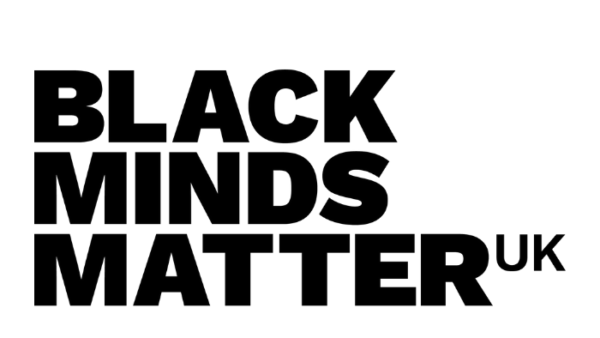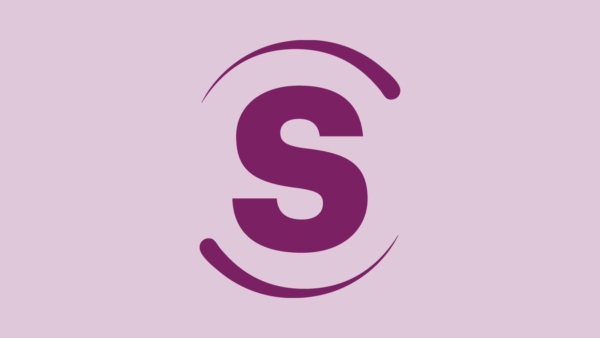Why is diversity of thought relevant now?
From a business point of view, the pandemic has taught us many things. At a business leadership level, once of the most relevant is the importance of divergent thinking, of diverse, innovative perspectives in decision making, particularly when under pressure and in uncertain situations. During the pandemic, the dependence of organisations on the decisions of their leaders for survival has been greater than at any time that I can remember. And I’m quite old.
When you combine the pressure-cooker of economic uncertainty and groups of leaders who are too similar in their decision-making approach, you can get short-sighted, panicky decisions that won’t stand an organisation in the best stead. So in today’s podcast, I want to talk about how to bring diversity of thought to leadership teams so that the decisions made at the top of organisations have been considered from multiple and diverse viewpoints. Welcome to diversity of thought, the strengths way.
So what’s groupthink?
First up, a word or two on ‘Groupthink’ – this is a social psychological phenomenon which can happen when like-minded, homogenous groups get together to make decisions, particularly in high stakes, high stress environments, where there’s pressure on a group to make a decision quickly and consensually. There are plenty of well-publicised historic examples which I don’t have time to go into here but the NASA Challenger space shuttle disaster and the US’s farcical attempt to invade Cuba back in 1961 both bore the hallmarks of groupthink.
More recently, Swissair’s collapse and significant challenges for M&S and British Airways in the UK are all examples of where groups insulated themselves from the reality of their situation, shut out dissenting voices, and believed they were bigger and better than anyone who told them they weren’t – and in each case, that led to poor decision-making and ultimately to business failure, or at least a significant downturn in business success. That’s groupthink, it’s dangerous and it’s more likely to happen when everyone in a decision-making process comes from a similar background and is thought to think in a similar way, without anyone actually checking.
Can diversity help reduce groupthink?
Groupthink is an extreme version of a natural human tendency to define ourselves and behave in a way which allows us to be protected by the group. So what can we do about it to increase diversity of thinking and therefore improved decision making? Well, a recent Boston Consulting Group study found that companies with more diverse management teams have 19% higher revenues as a result of being more innovative.
Katherine Phillips, a professor from Columbia Business School, said in summary of her research titled ‘How Diversity Makes Us Smarter’, “Diversity jolts us into cognitive action in ways that homogeneity simply does not. Diverse teams become better prepared for decision-making and accomplishing the task at hand. A sense of complacency and sameness in thinking is more likely in homogeneous teams than in diverse teams. Differences among team members force each person to anticipate that there will be alternative and unexpected viewpoints to consider and evaluate. Reaching consensus will take more effort. People must work harder to communicate their own thinking, and they need to broaden their own views to consider unexpected perspectives of others. This takes more work and preparation, but it’s significantly valuable.”
What is diversity without inclusion?
Increasing diversity, though, should not be thought of as a box-ticking exercise. To get the most from increased diversity requires a change in behaviour to ensure that all voices are heard; otherwise you have diversity without true inclusion. The D without the I. There’s also the risk that people with specific experience for which they have been recruited into a leadership team become the sole voice representing that expertise.
The ideal should be to encourage non-experts to voice their views and to remain curious and ask questions of experts that help everyone’s understanding. So diversity per se (that is, having a more diverse group of leaders with decision making authority) is a part-solution but not without inclusion. If you do diversity without inclusion, your diversity will disengage or leave. As my good friend and D&I expert Alison France said to me recently, Inclusion eats diversity for lunch.
Inclusion and diversity of thought – the strengths way
Let’s look at a method then for introducing Inclusion, the strengths way. When combined with good questioning and listening behaviours, with an attitude of curiosity and not assumption, strengths help teams and groups become more inclusive. The strengths approach, as you know, comes from positive psychology and has been around for more than 20 years within the discipline of psychology.
Organisations that use strengths see significant improvements in business success (sales, profit, customer engagement, staff engagement) plus individual employee benefits (well-being, stress, motivation, relationships, problem-solving, teamworking). Strengths assessment tools form an important part of this as they help people understand what they love most about work, how that makes them positively, uniquely different, and how they can contribute greatest value. The strengths approach isn’t about skill, it’s about motivation, natural inclination towards working in a particular way.
Improving diversity of thought for leadership teams using strengths – how does it work?
So how do strengths improve diversity of thought for leadership teams? Here’s how it works.. Taking Strengthscope as an example strengths assessment, the chances of you reporting the same top 7 strengths in the same order as anyone else are 1 in 1.3 billion. Because of that, the tool helps individuals to understand the unique way in which they do things and in this context, the unique way they solve problems and make decisions. With strengths, because you understand your own differences better, you can better appreciate other people’s too. Combined with good enquiry (asking good questions and actively listening to what others say), this deepens understanding and true connection in a group and enables us to be more appreciative of different perspectives. Which in turn helps to bring a genuine diversity of thought to leadership groups when members stay curious about other people’s perspectives and the different ways that they are considering the same challenge or problem, approaching it from their unique position. So we can draw on others’ strengths to come to a more thoughtful, considered, rounded position.
An example from the banking world – strengths awareness improves decisions
Let me give you a concrete example – I was working at a central bank some years ago with a group of senior analysts. This group was responsible for planning for economic uncertainty and shocks and informing policy for the bank and therefore, for the whole national economy – pretty important stuff. Now Strengthscope has 24 strengths – and in your report, you have a Top 7 (a significant 7) highlighted – you see your whole profile but the Top 7 appear in a different colour.
We also ask people separately to select their Standout 3 – those strengths that define them, that energise them the most and we see that as an individual choice. So in this group of analysts, 90% reported Critical thinking as one of their Significant 7 AND 90% reported Critical thinking as one of their standout 3! So you could argue that’s a recipe for groupthink – the vast majority of the group tends to approach problems by systematically breaking them down into component pieces to see how they work.
However, when they compared strengths profiles, they found that each individual analyst had different complementary strengths that worked alongside their Critical thinking – some connected with others to brainstorm and bounce ideas (those people had Collaboration or Relationship building strengths); some considered macro economic issues on a global scale naturally (those with a Strategic mindedness strength) some solved problems by looking for new and fresh solutions (they had Creativity strengths) and some looked to past experiences to inform their problem solving (they had Common sense strengths). For every analyst we talked to, there was a different story, a different way of decision-making. And when the group understood that, they could see how they could call on each other for a different perspective than they might arrive at on their own. And when you bring create behavioural habits and practice around that insight, you can avoid groupthink.
How do strengths work at the group or team level – what can this tell us and what can we do?
When we think of strengths at the group level (what do the strengths look like as a whole?), it can help us define how the group are likely to behave in good times and when under stress. And when you know individual and group strengths, you can start to understand better why certain individuals behave in certain ways and why the group overall operates as it does. And this helps you make better decisions as to how to bring individual strengths to the table to help with discussion and decision-making and steer away from repeating the same unhelpful behaviours time and again.
For example, in groups with a lot of Relational strengths but no Execution, they may engage in debate but not make decisions – so when you know that, you can appoint someone who can help keep decision-making on track. In low Thinking, High Execution teams, the quality of problem-solving may not be high and a move to action may be too quick – when you know that, make sure you’re calling on those with Thinking strengths so that the thinking has been done. Low Relational, high Emotional teams might mean a lack of cohesion in the team as individuals are energised by their independence and they make lack connection with the wider business – so bring in representatives from the wider organisation to sense-check decisions and develop some habits to make sure that the team presents group decisions consistently.
There it is – strengths to improve diversity of thought in decision-making.
Five tips to improve diversity of thought for leadership teams
Before I conclude, I’d like to summarise the takeaways from my work with leaders on improving diversity of thought through strengths…I have five:
- Proactively increase leadership team diversity – data shows this will make a difference, when that diversity is valued and leveraged
- Know your individual and team strengths and risks – complete some kind of strengths assessment to bring to light differences in the ways that team members think, solve problems, find solutions and reach decisions
- Call on the strengths, call out the risks – make sure individuals with particular strengths are used. Leverage the group’s strengths. Call out risks if and when they become visible at the individual and group levels.
- Have a process to ensure everyone is heard – as an idea Nancy Kline has developed some great guidelines for what she calls a thinking environment…her approach is very specific, but very helpful guidance on good group discussion behaviours. As a minimum, develop a practice of asking those who have contributed less to give their views, and also be prepared that some may need time to reflect. Finally, be aware of those in dominant privilege groups who may inadvertently (or intentionally) steer the group in a particular direction.
- Cultivate behaviours of listening and questioning – stay curious; ask questions; suspend assumptions; find out why people are offering a different view rather than arguing your own. And capture this in a team charter which will define what’s ok and not ok in the team as regards behaviours.
There’s more on diversity and strengths – check out my other podcasts
Thanks for listening this week, I truly appreciate your time. For more on the strengths approach to diversity and inclusion, check out my podcast at season 7, episode 11 on diversity and inclusion: how strengths can help. If you’re getting value out of the podcasts, please share and please also subscribe because when you subscribe, it makes a difference to how visible the podcast becomes to others who might benefit. Thanks again and till next time, stay strong.











